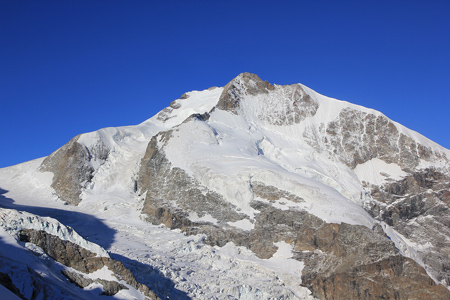Piz Bernina
- Piz Bernina
- 4049 m
- Primary factor 2234 m
- Location: North 46:22.944, East 009:54.482 (GPS on the summit)
- Location: Near Pontresina, Eastern Switzerland, on the Swiss/Italy border.
- Climbed August 28, 2011.
- Difficulty: YDS class 5.1, UIAA III, French Alpine PD+
